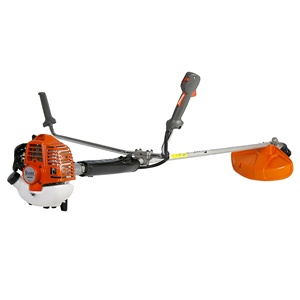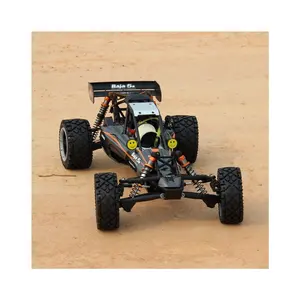(42 products available)













































































































































































































35cc 2-stroke engines are generally smaller 2-stroke engines with various applications. However, 35cc is the size of the engine, not the type. Knowing the engine types will give better insights into engine functions.
Outboard motor engines
35cc 2-stroke outboard engines are located in the transom of a boat. They power the boat to navigate through waters. These engines are compact but very powerful and lightweight. They are favorable in salt and freshwater fishing and yacht racing.
Automotive engines
Some cars and trucks use the 35cc 2-stroke engine to drive the wheels for movement. They are mostly used in small vehicles that require less power or where space is limited.
Moto and powercycle engines
35cc 2-stroke moto engines are installed in motorbikes to provide power for movement and transport. They are lightweight and small so that the motorbike can function optimally with a minimal fuel requirement.
Garden and landscaping equipment engines
Many garden and landscaping tools use the 35cc 2-stroke engine to trim, cut, blow, or till soil. They are suitable for hedge trimmers, chainsaws, tillers, and leaf blowers, and they offer high power density in a compact size.
Air compressor engines
Some portable air compressors use the 35cc 2-stroke engine to compress air for blowing and pumping purposes. They are ideal for tire inflation, powering pneumatic tools, and general-purpose air supply in workshops and construction sites.
Others include generator sets, go-kart engines, and snowmobiles. 2-stroke engines are preferred in these applications because they are small, light, and powerful. Their installation in smaller equipment saves space.
Some manufacturers may provide a 35cc two-stroke petrol engine with the following specifications:
It is important to note that the information highlighted above will not be the same in all manufacturers’ engines. Some manufacturers may offer a more detailed specification with additional features other than specified above.
For the engine to function optimally throughout, it is a requirement that it be maintained and serviced frequently. Here are a few maintenance tips for 35cc two-stroke small engines:
With their high power output-to-weight ratio, the 35cc 2-stroke engines are versatile and ubiquitous in numerous industries and daily life. Here are some use cases:
Lawn and Garden Care:
35cc 2-stroke lawn mower engines power many residential and commercial push and self-propelled mowers to maintain parks and green spaces. Their lighter weight compared to 4-stroke engines allows for more maneuverable tools. Some trimming and pruning activities also use this engine-powered equipment, such as string trimmers, hedge trimmers, and chainsaws. These tools can tackle overgrown vegetation, edges, and shrubs efficiently. Power blowers and vacuums equipped with a 35cc 2-stroke engine can collect fallen leaves in a short time. Together, they help achieve not only a well-maintained lawn but also an optimized workspace for other activities to be carried out with ease.
Construction and Demolition:
Handheld equipment like 35cc 2-stroke saws, pipe cutters, and jackhammers are commonly used on construction sites. The former two cuts different kinds of materials, including metal pipelines and concrete pipes respectively, while a jackhammer breaks up concrete. Also known as pavement breakers, jackhammers operated by 35cc 2-stroke engines are portable and powerful, making them suitable for breaking up concrete and asphalt. Their portability enables operators to work in areas where larger equipment would be impractical.
Automotive Repair and Maintenance:
Equipped with a 35cc 2-stroke engine, a portable gas-powered engine will be used as an air supply device, commonly known as an air compressor. An air compressor provides compressed air to power hand tools, inflate tires, spray paint, and perform other tasks requiring high-pressure air. Its portability makes it easy to move around a workshop or job site as needed.
Forestry and Land Management:
Sometimes, there is a need to clear overgrown land or prepare it for planting by cutting and chopping a large number of woods and stumps. Wood chipper shredder and stump grinder are two machines that can process large amounts of wood and stumps and are powered by 35cc 2-stroke engines. Their efficiency makes them suitable for use in forestry management, agricultural operations, and land clearing for construction projects.
Emergency Services and Disaster Relief:
An emergency rescue situation calls for prompt action and initiative in an effort to safeguard human safety and surrounding property to the greatest extent possible. Chainsaws, weedeck mowers, and pressure washers powered by 35cc 2-stroke engines are valuable tools during disaster relief efforts. Chainsaws can be used to clear debris, remove fallen trees, or make emergency repair cuts. Weed mowers may be utilized for fire breaks or to access areas obstructed by tall vegetation. Pressure washers can help clean equipment, remove debris, or sanitize affected areas.
Intended application:
It is important to consider the purpose and type of equipment the engine will be used for. Different applications may require distinct power ranges, torque characteristics, and engine features.
Power:
Ensure the engine's power output matches the requirements of the intended use. Evaluate the needed power for the specific application to ensure proper performance and functionality.
Fuel efficiency:
Choosing an engine with good fuel economy can help minimize operating costs and ensure longer run times in equipment or applications where continuous operation is essential.
Availability of spare parts:
Selecting an engine from a manufacturer or model with readily available replacement parts can help simplify maintenance and repair procedures, reducing downtime and ensuring prolonged equipment life.
Compatibility with existing equipment:
When replacing or integrating an engine into a system, it's essential to ensure that the engine is compatible with other components, such as transmission systems or electronic control units, to guarantee proper functionality and ease of installation.
Quality and reputation of the manufacturer:
Choosing an engine produced by a manufacturer with a proven track record of quality and reliability can help ensure a dependable and long-lasting power source while also facilitating maintenance and support services.
Q1: What do people use 35cc 2 stroke engines for?
A1: Those small two-strokes are everywhere. They power everything from lawnmowers to leaf blowers, chainsaws, and weed whackers. The 35cc engine is a common size. It's big enough to do the job and small enough to fit in a lawn mower.
Q2: Are 35cc 2 stroke chainsaw engines big?
A2: No. Some chainsaws have 2 stroke engines that are about 45 to 50 cc. But there are even bigger ones. Professional grade chainsaws can have 70 cc engines or more.
Q3: Do 35cc 2 stroke outboard engines have lots of power?
A3: No. Small outboard motors are usually from 2 to 15 horsepower. A 35cc 2 stroke might make 3 or 4 horsepower. Larger outboards are up to 40 hp. Bigger ones go up to 300 horsepower.
Q4: What happen to the 2 stroke engines?
A4: Two-stroke engines produce more power. They also need less space than four-stroke engines. However, two-stroke engines waste fuel and burn oil. Four-stroke engines are better to burn up just gas. Factories now make more four-stroke engines.